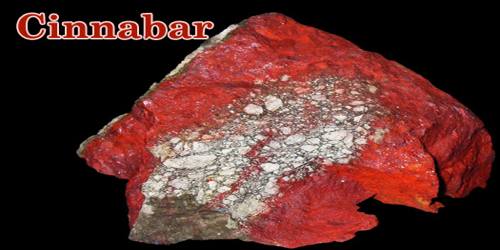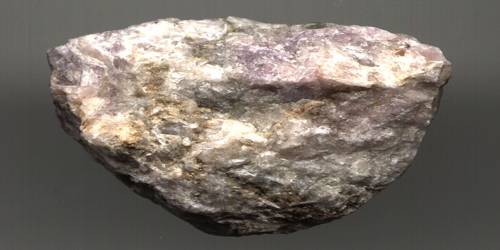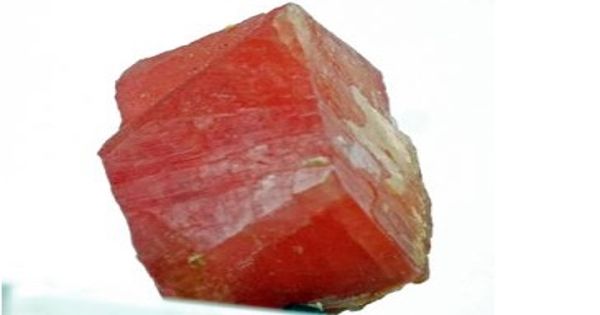Definition –
Cinnabar (/ˈsɪnəbɑːr/) or cinnabarite (/sɪnəˈbɑːraɪt/), likely deriving from the Ancient Greek: κιννάβαρι (kinnabari), is a toxic mercury sulfide mineral with a chemical composition of HgS. It is the only important ore of mercury. It has a bright red color that has caused people to use it as a pigment, and carve it into jewelry and ornaments for thousands of years in many parts of the world. Because it is toxic, its pigment and jewelry uses have almost been discontinued.
Cinnabar generally occurs as a vein-filling mineral associated with recent volcanic activity and alkaline hot springs. The mineral resembles quartz in symmetry and in its exhibiting birefringence. Cinnabar has a mean refractive index near 3.2, a hardness between 2.0 and 2.5, and a specific gravity of approximately 8.1. The color and properties derive from a structure that is a hexagonal crystalline lattice belonging to the trigonal crystal system, crystals that sometimes exhibit twinning.
Cinnabar has been used for its color since antiquity in the Near East, including as a rouge-type cosmetic, in the New World since the Olmec culture, and in China since as early as the Yangshao culture, where it was used in coloring stoneware.
History: The name “cinnabar” is said to derive from an Eastern Indian phrase meaning “dragon’s blood.” The part to remember is that Eastern dragons were long considered helpful, beneficial creatures not the fire-breathing destructive tyrants they are in the West. The stone’s bold red color (frequently natural, although sometimes dyed) supports the “dragon’s blood” description! Other sources say the name comes from ancient Greek or Persian.
The name comes from Ancient Greek: κιννάβαρι (kinnabari), a Greek word most likely applied by Theophrastus to several distinct substances. Other sources say the word comes from the Persian: شنگرف shangarf (Arabicized as زنجفرة zinjifra), a word of uncertain origin. In Latin, it was sometimes known as minium, meaning also “red cinnamon”, though both of these terms now refer specifically to lead tetroxide.
During ancient times, cinnabar was mined to be turned into mercury. Medieval alchemists (trying to turn lead into gold), would use the changeable “quicksilver” in their efforts (often resulting in mercury poisoning and madness). Renaissance painters such as Titian would grind the non-gem form into powder for a color called vermilion or “China red.” The red dust was used in Central America by the Olmec and Mayan peoples in their burials, dusted over the dead. In medieval China, cinnabar was added to lacquerware as a colorant.
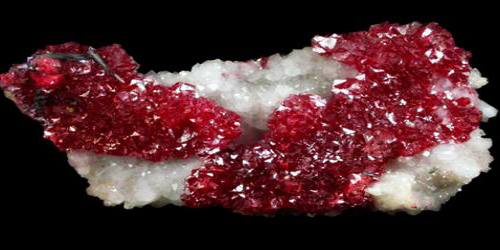
Occurrence and Properties of Cinnabar –
Cinnabar is commonly encountered with pyrite, marcasite, and stibnite in veins near recent volcanic rocks and in hot-springs deposits. The most important deposit is at Almadén, Spain, where it has been mined for 2,000 years. Other deposits are in Huancavelica, Peru; Iudrio, Italy; and the Coast Ranges of California, U.S. Metacinnabar, the isometric (cubic) form of cinnabar, transforms to cinnabar upon heating to 400°-550° C (750°-1,020° F).
Cinnabar precipitates as coatings on rock surfaces and as fracture fillings. Less often, cinnabar can be deposited in the pore spaces of sediments. It is usually massive in habit and is rarely found as well-formed crystals. Other sulfide minerals are generally found associated with cinnabar. These can include pyrite, marcasite, realgar, and stibnite. Gangue minerals associated with cinnabar include quartz, dolomite, calcite, and barite. Small droplets of liquid mercury are sometimes present on or near cinnabar.
Mineral cinnabar is a very soft material and was popular for carving. Most of what is currently sold as cinnabar is either lacquerware or resin with a synthetic colorant to get the right hue. Natural cinnabar should only be wiped with a soft, damp cloth while wearing rubber or latex gloves. Lacquerware is similarly soft. Avoid using steam or ultrasonic cleaners. Imitation cinnabar which is all Fire Mountain Gems and Beads sells is a resin that can be cleaned with a soft brush if needed. Avoid steam, as resins can melt.
The most striking property of cinnabar is its red color. Its bright color makes it easy to spot in the field and is a fascination for those who discover it. It has a Mohs hardness of 2 to 2.5 and is very easily ground into a very fine powder. It has a specific gravity of 8.1, which is extremely high for a nonmetallic mineral.
The luster of cinnabar ranges from dull to adamantine. Specimens with a dull luster are usually massive, contain abundant impurities and do not have the brilliant red color of pure cinnabar. Adamantine specimens are usually the rarely found crystals.
Toxicity: Associated modern precautions for use and handling of cinnabar arise from the toxicity of the mercury component, which was recognized as early as in ancient Rome. Because of its mercury content, cinnabar can be toxic to human beings. Overexposure to mercury, mercurialism, was seen as an occupational disease to the ancient Romans. Though people in ancient South America often used cinnabar for art or processed it into refined mercury (as a means to gild silver and gold to objects) “the toxic properties of mercury were well known. It was dangerous to those who mined and processed cinnabar; it caused shaking, loss of sense, and death. Data suggests that mercury was retorted from cinnabar and the workers were exposed to the toxic mercury fumes.” “Mining in the Spanish cinnabar mines of Almadén, 225 km (140 mi) southwest of Madrid, was regarded as being akin to a death sentence due to the shortened life expectancy of the miners, who were slaves or convicts.”
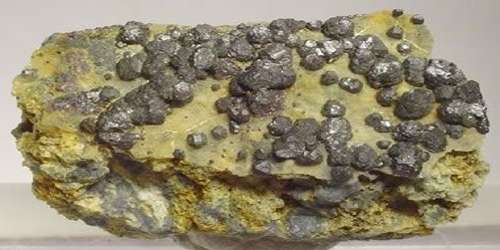
(Metacinnabar)
Metacinnabar: Metacinnabar is a polymorph of cinnabar. It has the same chemical composition (HgS) as cinnabar but a different crystal structure. Cinnabar is trigonal, while metacinnabar is isometric. The two minerals should not be confused with one another because metacinnabar has a metallic gray color, a gray-to-black streak, and a metallic-to-submetallic luster.
Uses and Benefits of Cinnabar –
Cinnabar is the only important ore of mercury. For thousands of years, cinnabar has been mined and heated in a furnace. The mercury escapes as a vapor that can be condensed into liquid mercury.
Cinnabar has been used for its color since antiquity in the Near East, including as a rouge-type cosmetic, in the New World since the Olmec culture, and in China for writing on Oracle bones as early as the Zhou dynasty. Later in the Song dynasty it was used in coloring lacquerware.
Cinnabar’s use as a color in the New World, since the Olmec culture, is exemplified by its use in royal burial chambers during the peak of Maya civilization, most dramatically in the 7th-century Tomb of the Red Queen in Palenque, where the remains of a noblewoman and objects belonging to her in her sarcophagus were completely covered with bright red powder made from cinnabar.
Rich black, bold red, turquoise blue or creamy white imitation cinnabar is carved or molded with interesting patterns that give an Eastern air to jewelry and decor designs. The bold red version most strongly echoes the appearance of historical Chinese lacquerware, offering a strong visual to design around. The stylistic influences are very strong, so be aware when people design what images and connotations this material brings to their creations.
Information Source:
